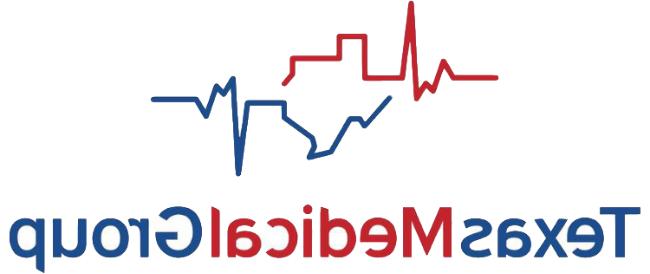
Protecting Employees and Patients from Communicable Diseases
Communicable diseases present a unique risk in health care facilities. Aside from your duty to your patients, you also have the important responsibility of safeguarding your employees’ health and safety while they are in the workplace. In order to do that, you need to prepare for a communicable disease outbreak, either amongst your staff or your local community, so that you can take measures to maintain a safe working environment.
Employee Education
Certain diseases require special treatments or protocols to avoid transmission from the patients to others in the facility. Your staff should know the proper precautions to take for each type of communicable disease, including when to report a disease, special treatment needs and extra safety or housekeeping measures.
Communicable Disease Policy
You should be concerned not only by diseases your patients may have, but also by any disease that your workers may bring into the facility. You should develop a communicable disease policy requiring employees to notify their supervisor of any possible exposure to infectious diseases. This will allow you to take proactive preventive measures against the spread of the disease.
Because medical disclosures are governed by the Americans with Disabilities Act (ADA), you must ensure that the policy meets the requirements of the ADA, including keeping employee health information confidential as required by the Health Insurance Portability and Accountability Act (HIPAA). As part of the policy, employees may be asked to work reduced hours or perform modified job duties until they are no longer contagious.
Travel and Quarantine Policies
As you know, it is important that health care workers get vaccinated when applicable, and that applies to overseas travel as well. If employees are travelling to areas with recent communicable disease outbreaks, they must obtain all recommended vaccinations and follow all health procedures.
If employees travel abroad and must be quarantined upon return, they should notify immediately to arrange for paid leave or other options. This policy should be communicated to employees prior to travel.
Employee Leave
Social distancing is one of the best methods to prevent the spread of a communicable disease in the workplace. In your facility, that may mean that the best course of action for an ill employee is to stay home to reduce the likelihood of infecting others. Beyond this, other employees may need to miss work to care for sick family members during a disease outbreak. In response, companies should consider devising policies to address these concerns and leave issues.
Leave policies should address the following issues:
- Maintenance of all facility operations.
- Sustaining a functioning workforce to minimize the effects of employee absenteeism, including backup procedures for critical positions.
- Compliance with applicable laws, including the Family and Medical Leave Act (FMLA) and the Uniformed Services Employment and Reemployment Rights Act (USERRA).
- Address the following logistical concerns:
- How employees request communicable disease leave
- Requirements for regularly reporting medical conditions
- Whether leave is paid or unpaid
- Whether benefits are provided or accrued during the leave period
- If leave becomes exhausted, whether employee will be required to return to work
Stay Within the Law
In addition to the laws mentioned above, there are other laws that may affect a communicable disease policy and its ramifications:
- The Privacy Rules under HIPAA require employers to protect the privacy of all employee medical information. As a result, employers must determine what diseases employees must report, who will have access to this information and whether reporting this information to public health officials is necessary. If other employees must be notified of a possible communicable disease case in the workplace, all necessary precautions must be taken to protect the privacy of the infected individual.
- Under FMLA, for employers with 50 or more employees within a 75-mile radius, employees who have worked for the company for 12 months and have worked 1,250 hours within the last 12 months are entitled to up to 12 weeks of unpaid leave due to a “serious health condition.” Most communicable diseases will likely be considered applicable under this regulation.
- Employees who suffer permanent health problems that substantially affect their daily lives may be entitled to protections under the ADA.
- Under the Employee Retirement Income Security Act of 1974 (ERISA), employers must confirm that employees under their health plan receive an updated summary plan description (SPD) of the health benefits. If employees do not receive a SPD, the provisions allowing the plan to change may not be enforceable. Furthermore, if an employer cannot prove that employees and/or dependents did receive a revised SPD, then the employer may be required to provide higher benefits in accordance with previous SPDs.
Creating a Communicable Disease Response Plan
Creating a communicable disease response plan is an effective way to communicate with employees clearly while also complying with local, state and federal guidelines for pandemic responses. Plans should be concise, easy to understand and effective in preserving the health and safety of all employees. Plans should include:
- The designation of a person within the workplace who is responsible for all disease planning and emergency actions
- Communication of the policy and required steps for requesting leave
- Development of backup protocol with regard to filling staff openings in the event of absences
- Development of a monitoring program to track employees who cannot return to work immediately due to illness
- Development of social distancing strategies (where possible) to limit transmission risks
- Plan distribution timeline and format (online, hard copy, etc.)
This Risk Insights is not intended to be exhaustive nor should any discussion or opinions be construed as legal advice. Readers should contact legal counsel or an insurance professional for appropriate advice. © 2010-2011 Zywave, Inc. All rights reserved.

Discussion
There are no comments yet.